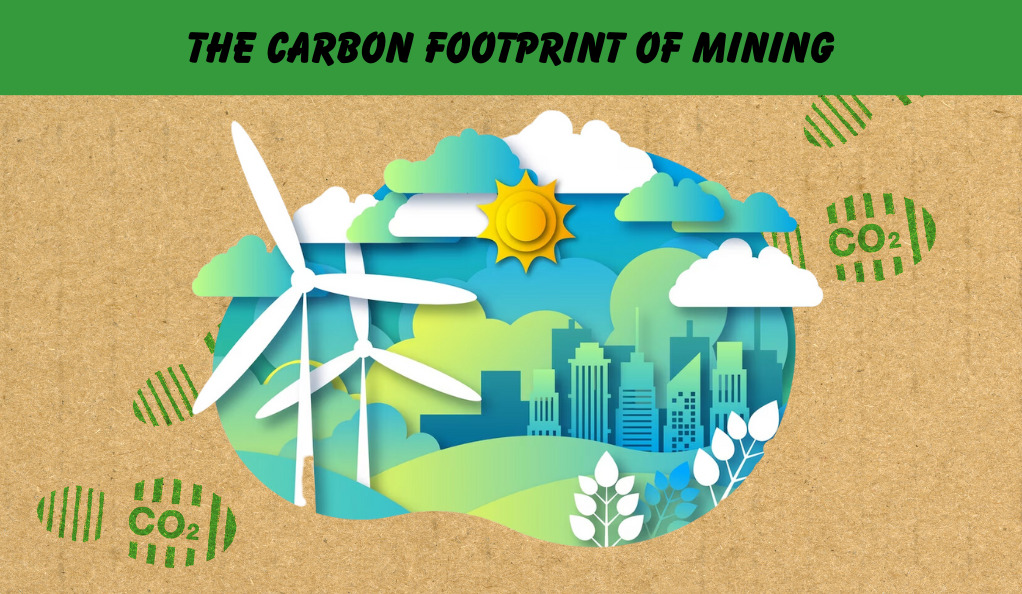In the digital age, the allure of cryptocurrencies has captivated the world. From Bitcoin to Ethereum, these decentralized digital currencies promise a future where transactions are secure, transparent, and free from traditional banking systems. At the heart of this revolution is a process known as cryptocurrency mining. But what exactly is it, and what are its implications for our society and environment?
What is Cryptocurrency Mining?
Cryptocurrency mining is the computational process by which new coins are introduced into circulation and transactions are added to the public ledger, known as the blockchain. Miners use powerful computers to solve complex mathematical problems. Once a problem is solved, a new block is added to the blockchain, and the miner is rewarded with a certain number of coins. This process not only validates and records transactions but also ensures the security and integrity of the entire network.
The Rise of the Mining Industry
Over the past decade, the cryptocurrency mining industry has witnessed exponential growth. Initially, enthusiasts could mine coins using just their personal computers. However, as the mathematical problems became more complex, the need for more computational power grew. This led to the development of specialized hardware known as ASICs (Application-Specific Integrated Circuits) designed solely for mining purposes.
The lucrative nature of mining, combined with the soaring prices of cryptocurrencies, has resulted in a gold rush-like scenario. Large-scale mining farms, equipped with thousands of machines, have sprung up worldwide, particularly in regions with cheap electricity. While this has led to significant economic opportunities, it has also raised concerns about the industry’s environmental and social impact.
The Energy Consumption Dilemma
The digital gold rush of cryptocurrency mining has brought with it a significant challenge: an insatiable appetite for energy. As miners compete to solve complex mathematical problems faster than their peers, the energy required for these operations has skyrocketed.
Understanding the Scale
To put things into perspective, the Bitcoin network alone consumes more energy annually than some countries. According to the Cambridge Centre for Alternative Finance, Bitcoin’s annual energy consumption rivals that of countries like Argentina and the Netherlands. This immense energy usage is primarily due to the proof-of-work system, where miners must compete to solve problems, leading to a race for more computational power and, consequently, more energy.
The Environmental Cost
The environmental implications of such vast energy consumption are profound. Most mining facilities draw power from the grid, which, in many regions, is still heavily reliant on fossil fuels. This means that the carbon footprint of cryptocurrency mining is substantial. For instance, it’s estimated that for every Bitcoin mined, there’s a carbon footprint equivalent to that of 10,000 VISA transactions or watching over 50,000 hours of YouTube.
The Economic Perspective
From an economic standpoint, the energy consumption of cryptocurrency mining can be seen in two lights. On one hand, regions with cheap electricity have seen an economic boom, with mining farms setting up shop and creating jobs. On the other hand, this has sometimes led to increased electricity prices for local residents, as the demand from mining operations drives up the cost.
Greenwashing in the Mining Industry
As awareness of the environmental impact of cryptocurrency mining has grown, so too have efforts by the industry to present itself as “green.” However, not all of these claims stand up to scrutiny.
Misleading Sustainability Claims
Many mining operations tout their use of renewable energy sources, such as hydroelectric or solar power. While it’s true that some facilities are located near renewable energy sites, this doesn’t necessarily mean they’re using green energy exclusively. In many cases, these claims are exaggerated or outright false, a practice known as greenwashing.
The Reality of Renewable Energy in Mining
The truth is, very few mining facilities are building new renewable energy infrastructure for their operations. Most simply take advantage of existing renewable energy sources, which doesn’t offset the overall carbon footprint of the industry. Moreover, the intermittent nature of renewable sources like wind and solar means that mining facilities often rely on fossil fuels as a backup, further muddying their “green” claims.
The Carbon Footprint of Mining

The environmental repercussions of cryptocurrency mining are undeniable. Beyond the sheer energy consumption, the carbon emissions associated with this industry are a growing concern, especially as global efforts intensify to combat climate change.
Deciphering the Carbon Emissions
For every kilowatt-hour (kWh) of electricity consumed, there’s an associated carbon emission, which varies based on the energy source. Fossil fuels, such as coal and natural gas, have a much higher carbon footprint compared to renewable sources. Given that many mining operations rely on non-renewable energy, the carbon emissions are substantial.
| Energy Source | Emissions (gCO2/kWh) |
|---|---|
| Coal | 937 |
| Natural Gas | 499 |
| Hydroelectric | 0-24 |
| Solar | 48 |
| Wind | 11 |
The Global Impact
To understand the global impact, consider that the Bitcoin network’s carbon footprint is comparable to that of a medium-sized country. This not only exacerbates global warming but also contributes to air pollution, affecting the health of communities near power plants.
The Social Impact of Mining
Beyond the environmental concerns, cryptocurrency mining has profound social implications. Communities around the world are feeling the effects, both positive and negative.
Economic Opportunities and Challenges
Regions with abundant cheap electricity, especially from renewable sources, have seen a surge in mining operations. This has led to job creation and increased local revenue. However, the influx of mining can also lead to increased electricity prices for residents, as the high demand from mining operations can strain local grids.
Community Disruptions
In some areas, large-scale mining operations have led to noise and heat pollution. The constant hum of thousands of machines can be disruptive, and the heat generated can affect local climates. Additionally, there have been instances where mining operations, in their quest for cheap electricity, have relocated to residential areas, leading to disputes and tensions with local communities.
Regulatory and Ethical Concerns
The decentralized nature of cryptocurrencies poses challenges for regulators. While some countries have embraced the potential of digital currencies, others have imposed strict regulations or outright bans, especially on mining operations. These decisions often stem from concerns about energy consumption, potential for illicit activities, and the desire to protect consumers and investors.
Renewable Energy and Mining
The juxtaposition of cryptocurrency mining’s energy-intensive nature with the global push for sustainability has led to a pivotal question: Can the industry transition to renewable energy?
The Potential of Green Mining
The term “green mining” has gained traction, referring to mining operations powered primarily by renewable energy sources. The potential benefits are twofold: a significant reduction in carbon emissions and a possible decrease in operational costs over the long term, given the decreasing costs of renewable energy technologies.
Current Renewable Initiatives in Mining
Several mining operations, especially in regions with abundant renewable resources, have started transitioning to green energy. For instance:
- In the Sichuan province of China, miners utilize excess hydroelectric power during the rainy season.
- In parts of Canada and Scandinavia, mining facilities are exploring the use of wind and geothermal energy, benefiting from the regions’ natural resources and cooler climates, which also reduce cooling costs.
Challenges in the Transition
While the shift to renewable energy in mining is promising, it’s not without challenges:
- Intermittency: Renewable sources like solar and wind are intermittent. Mining operations, which run 24/7, need consistent power, leading to reliance on fossil fuels during downtimes.
- Initial Costs: Setting up renewable infrastructure requires significant initial investment, which might be deterrents for smaller mining operations.
- Geographical Limitations: Not all regions are suitable for all types of renewable energy. For instance, solar energy might not be viable in areas with limited sunlight.
Innovative Solutions
To address these challenges, the industry is exploring innovative solutions:
- Hybrid Systems: Combining multiple renewable sources, like solar and wind, can help mitigate the intermittency issue.
- Energy Storage: Advanced battery storage systems can store excess energy generated during peak times for use during downtimes.
- Carbon Credits: Some mining operations are investing in carbon credits to offset their emissions, supporting environmental projects worldwide.
Regulatory Responses and Solutions
As the environmental and social impacts of cryptocurrency mining become more evident, regulatory bodies worldwide are stepping in with measures to ensure the industry’s sustainable growth.
Regulations on Energy Consumption

Several countries have imposed regulations on the amount of energy mining operations can consume. For instance, Iran temporarily banned cryptocurrency mining in 2021 due to power shortages caused by increased mining activities.
Incentives for Green Mining
To promote sustainable mining practices, some governments offer incentives for operations that use renewable energy. This includes tax breaks, grants, and reduced energy rates.
Community Engagement
Engaging with local communities is crucial. By understanding and addressing community concerns, mining operations can operate more harmoniously, leading to win-win situations for both miners and residents.
The Broader Implications of Cryptocurrency
While mining is a significant aspect of the cryptocurrency ecosystem, it’s essential to understand the broader implications of this revolutionary technology. Cryptocurrencies, with their decentralized nature and potential for financial inclusion, are reshaping the global financial landscape.
Financial Inclusion and Cryptocurrencies
One of the most promising aspects of cryptocurrencies is their potential to offer financial services to the unbanked and underbanked populations. Traditional banking systems often exclude a significant portion of the global population due to lack of documentation, trust, or accessibility. Cryptocurrencies, being decentralized and digital, can bridge this gap.
- Microtransactions: Cryptocurrencies allow for small transactions, which are often not feasible with traditional banking due to fees.
- Cross-border Transactions: Cryptocurrencies can facilitate faster and cheaper international transfers, bypassing the often cumbersome and expensive traditional banking routes.
Decentralized Finance (DeFi)
DeFi, or decentralized finance, is a burgeoning sector within the cryptocurrency world. It aims to recreate traditional financial instruments in a decentralized architecture, outside of companies’ and governments’ control.
- Lending Platforms: Users can lend or borrow funds directly, without intermediaries, often leading to better interest rates.
- Decentralized Exchanges: These allow users to trade cryptocurrencies without a centralized authority, reducing the risk of hacks and central point failures.
The Environmental Promise Beyond Mining
While the environmental impact of mining is a concern, the broader cryptocurrency and blockchain ecosystem holds promise for environmental causes:
- Supply Chain Transparency: Blockchain, the underlying technology of cryptocurrencies, can trace products from origin to consumer, ensuring ethical and sustainable practices.
- Carbon Trading: Blockchain can facilitate transparent and efficient carbon credit trading, promoting greener initiatives.
Challenges Ahead
Despite the potential, cryptocurrencies face challenges:
- Volatility: The value of cryptocurrencies can be highly volatile, leading to uncertainties for both investors and users.
- Regulatory Uncertainty: The decentralized nature of cryptocurrencies poses challenges for regulators, leading to a constantly evolving regulatory landscape.
- Security Concerns: While blockchain is inherently secure, the broader ecosystem, including exchanges and wallets, has been susceptible to hacks.
Conclusion
Cryptocurrency, a beacon of decentralized finance, promises a world of transparency and inclusivity. However, with its rise come undeniable challenges, from environmental concerns to regulatory complexities. Yet, these challenges also pave the way for innovation and dialogue. As we venture deeper into the crypto era, collaboration and adaptability will be crucial. By addressing concerns head-on and leveraging the potential benefits, we can navigate this digital frontier responsibly, ensuring a balanced and sustainable future for all.
At axerunners.com, our goal is to furnish well-rounded and trustworthy information regarding cryptocurrency, finance, trading, and stocks. Nonetheless, we avoid providing financial advice and instead encourage users to conduct their own research and meticulous verification.
Read More













